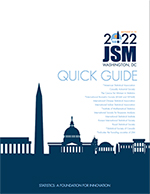Back
2022 Joint Statistical Meetings
Government Statistics Section
Session: Census Data
Compiling, Enumerating, and Estimating: Evaluating the 2020 Administrative Records Repository
Monday, August 8, 2022
Activity Number: 110
-
John Boies
US Census Bureau
Conducting a census is a complex and expensive endeavor. For many decades now, demographers, statisticians and academics alike have praised the use of Administrative Records (ADREC) data as a less-costly solution for enumerating the population. In this paper, we begin to compare and contrast an internal ADREC repository with published 2020 Decennial Census results and Census Bureau Population Estimates. We explore aggregate geographic and demographic comparisons at the national, state, and county levels. Further, we provide a balanced view of some of the strengths and weaknesses of the ADREC repository, highlighting areas where practitioners can make strides towards a less-costly, less-burdensome, and more-integrated and accurate solution for the 2030 Census; as well as suggest areas where improvements in the ADREC data can be made. It is important to note here that the purpose of this paper is to assess and evaluate an ADREC-based data product, and not to evaluate the official 2020 Census results in any way. We seek to provide more information to continue the exploration of the potential opportunities offered by increasing the use of ADREC data in the federal statistical system.

